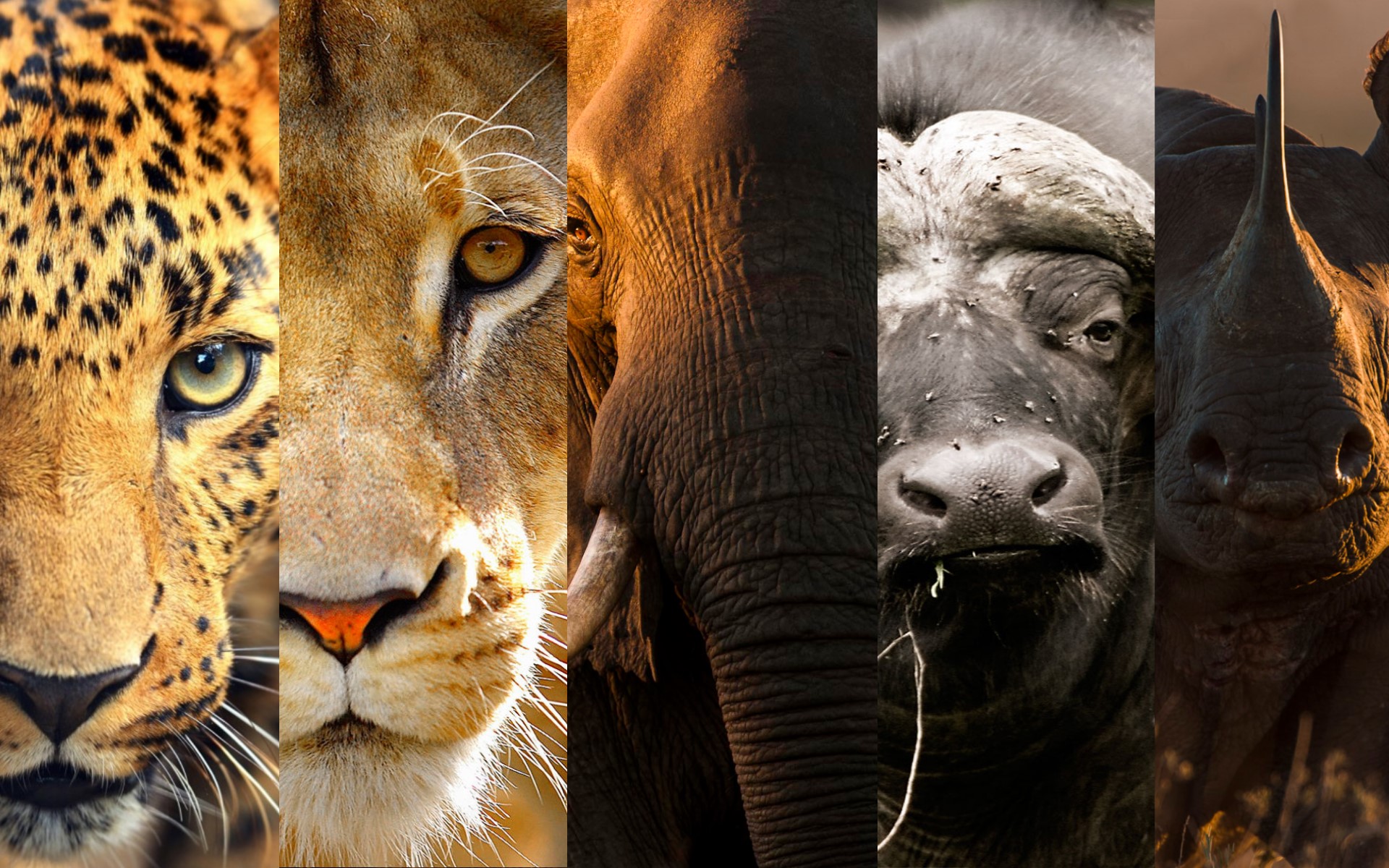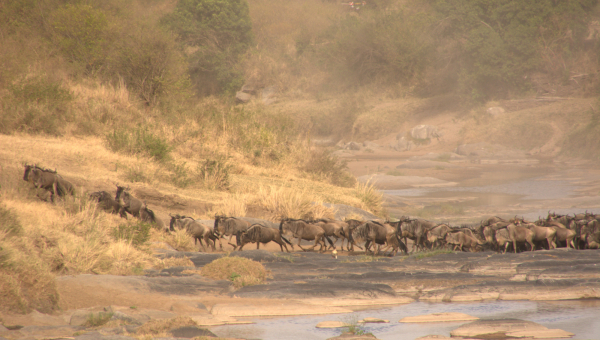🌍 Why Wildlife Diversity Matters
Kenya is a global biodiversity hotspot, home to over 25,000 animal species and more than 1,100 bird species, cementing its reputation as one of the world's richest safari destinations. A truly exceptional safari experience hinges on diversity—not just the chance to see the iconic Big Five, but also the opportunity to encounter rare endemic species and explore a variety of unique ecosystems.
This ranking combines:
- Species variety (mammals, birds, reptiles)
- Unique ecosystems (savannah, wetlands, forests, deserts)
- Visitor experience (accessibility, exclusivity, activities)
🏆 Top 10 Safari Parks in Kenya
1. Maasai Mara National Reserve
- Why #1: The undisputed crown jewel of Kenya safaris, globally famous for hosting the annual Great Migration and offering near-guaranteed Big Five sightings.
- Wildlife Highlights: Millions of wildebeest and zebras (July–October), the highest concentration of big cats (lions, cheetahs, leopards), and large herds of elephants and buffalo.
- Unique Ecosystem: Rolling golden savannah plains and the dramatic Mara River crossings.
- Visitor Experience: Hot-air balloon safaris, Maasai cultural tours.
- Best Time: July–October (Great Migration), January–February (Calving Season).
2. Amboseli National Park
- Why #2: Known as the "Home of the African Elephant," offering breathtaking, postcard-perfect views of colossal elephant herds set against the backdrop of Mount Kilimanjaro.
- Wildlife Highlights: Over 1,000 elephants, as well as lions, cheetahs, giraffes, and 400+ bird species.
- Unique Ecosystem: Swamps fed by Kilimanjaro's melting snow, acacia woodlands, and dusty, open plains.
- Visitor Experience: A premier destination for wildlife photographers.
3. Tsavo National Parks (East & West)
- Why #3: Kenya’s largest park system, covering over 22,000 km² of rugged, remote wilderness.
- Wildlife Highlights: The iconic "red elephants" (stained by the area's volcanic soil), lions, leopards, rhinos, and large crocodiles along the Galana River.
- Unique Ecosystem: Expansive lava flows, the vast Yatta Plateau, and the crystal-clear Mzima Springs.
- Visitor Experience: Offers a remote, wild safari feel with significantly fewer crowds.
4. Samburu National Reserve
- Why #4: Distinctly famous for the endemic "Samburu Special Five," species specially adapted to the semi-arid northern environment.
- Wildlife Highlights: Grevy’s zebra, reticulated giraffe, Somali ostrich, gerenuk, and beisa oryx. Also features elephants, lions, and leopards.
- Unique Ecosystem: Semi-arid savannah bisected by the lifeline Ewaso Nyiro River.
- Visitor Experience: Offers an intimate, less crowded safari and deep cultural immersion with the Samburu people.
5. Lake Nakuru National Park
- Why #5: A premier birdwatcher's paradise nestled in the Great Rift Valley, historically famous for its flamingos.
- Wildlife Highlights: Vast flocks of flamingos (seasonal), pelicans, over 450 other bird species, and crucial conservation efforts for black and white rhinos, as well as the endangered Rothschild’s giraffe.
- Unique Ecosystem: A soda lake surrounded by acacia forests and grassy plains.
- Visitor Experience: A compact park, ideal for a full-day trip from Nairobi.
6. Meru National Park
- Why #6: An underrated gem known for its high species diversity, often overlooked by mass tourism.
- Wildlife Highlights: All of the Big Five are present, along with a wide array of hippos, crocodiles, and over 400 bird species.
- Unique Ecosystem: Characterized by 13 rivers, lush vegetation, and dense doum palm forests.
- Visitor Experience: Extremely remote and quiet; known for its connection to the conservationists George and Joy Adamson of Born Free fame.
7. Aberdare National Park
- Why #7: A forested, mountainous highland reserve offering a completely different ecosystem from the open savannah.
- Wildlife Highlights: Rare forest species like the Bongo antelope and giant forest hog, alongside elephants, leopards, and black rhinos.
- Unique Ecosystem: Moorlands, bamboo forests, and spectacular waterfalls.
- Visitor Experience: Famous for its unique "tree lodges" (The Ark, Treetops), where you can watch animals from your room at night.
8. Nairobi National Park
- Why #8: The only protected area in the world where you can go on a classic safari with a city skyline as your backdrop.
- Wildlife Highlights: Lions, rhinos, giraffes, buffalo, and over 400 bird species.
- Unique Ecosystem: Open savannah directly bordering Kenya’s capital city.
- Visitor Experience: Perfect for short stays, layovers, and a quick, easily accessible wildlife fix.
9. Ol Pejeta Conservancy (Laikipia)
- Why #9: A leading private conservation hub that perfectly balances wildlife viewing with ethical practices.
- Wildlife Highlights: Home to the last two remaining northern white rhinos, all of the Big Five, and a dedicated chimpanzee sanctuary.
- Unique Ecosystem: Grasslands and riverine forests within the greater Laikipia region.
- Visitor Experience: Focused on conservation, offering strong educational elements and luxury lodges.
10. Hell’s Gate National Park
- Why #10: The top choice for an adventure-focused safari experience, emphasizing activity over sheer viewing volume.
- Wildlife Highlights: Giraffes, zebras, buffalo, and various antelopes. Famous for its raptors, including vultures and eagles.
- Unique Ecosystem: Dramatic cliffs, gorges (like the Ol Njorowa Gorge), and active geothermal features.
- Visitor Experience: Allows for unique activities like cycling safaris, rock climbing, and hiking.
Comparison Table: Safari Parks by Key Features
|
Rank |
Park Name |
Why It's Unique |
Best Time to Visit |
Core Wildlife Highlights |
|
1 |
Maasai Mara National Reserve |
Great Migration & Big Five density |
July–Oct (Migration) |
Wildebeest, Zebras, Big Five |
|
2 |
Amboseli National Park |
Mt. Kilimanjaro backdrop |
Photographers’ paradise |
1,000+ Elephants, Lions, Cheetahs |
|
3 |
Tsavo National Parks (E & W) |
Kenya's largest park system |
Remote, fewer crowds |
"Red elephants," Rhinos, Crocodiles |
|
4 |
Samburu National Reserve |
"Samburu Special Five" |
Intimate, cultural immersion |
Grevy’s zebra, Gerenuk, Reticulated giraffe |
|
5 |
Lake Nakuru National Park |
Birdwatcher's paradise & Rhino Sanctuary |
Easy day trip from Nairobi |
Flamingos (seasonal), Rhinos, Rothschild’s giraffe |
|
6 |
Meru National Park |
Underrated gem, high diversity |
Remote, fewer tourists |
Big Five, Hippos, 13 rivers |
|
7 |
Aberdare National Park |
Forested highlands & Tree Lodges |
Unique accommodation |
Bongo Antelope, Giant Forest Hog |
|
8 |
Nairobi National Park |
Safari at the city’s doorstep |
Perfect for short stays |
Rhinos, Lions, Giraffes with city skyline |
|
9 |
Ol Pejeta Conservancy |
Leading conservation hub |
Strong conservation focus |
Northern White Rhinos, Big Five, Chimps |
|
10 |
Hell’s Gate National Park |
Adventure safari destination |
Cycling, rock climbing, hiking |
Giraffes, Zebras, Raptors, Gorges |
FAQ: Essential Kenya Safari Planning
Q1: When is the absolute best time to see the Great Migration in Kenya?
The Great Migration herds are typically in the Maasai Mara National Reserve between July and October. The most dramatic part of this event—the Mara River crossings (where wildebeest brave crocodile-infested waters)—usually occurs from mid-July to mid-October. For the most reliable experience, the months of August and September are often recommended. The long dry season (July to October) is also the ideal time for general wildlife viewing as the vegetation is sparse and animals concentrate near water sources.
Q2: How much does a Kenya safari cost (Budget vs. Luxury)?
The cost per person per day varies significantly based on comfort level and exclusivity.
- Budget Safaris: Generally range from $150 to $250 per person per day. This typically involves shared group tours, basic camping, or simple budget lodges.
- Mid-Range Safaris: Typically cost between $250 and $500 per person daily, offering a balance of comfort and value.
- Luxury Safaris: Start at $500 and can exceed $1,100 per person per day for ultra-exclusive options. Luxury safaris include premium tented camps, private vehicles, gourmet dining, and internal flights.
Keep in mind that prices are generally 20-40% higher during the peak season (July–October, December–January).
Q3: What are the essential items to pack for a Kenya safari?
Essential packing focuses on comfort, safety, and blending into the environment:
- Clothing: Pack neutral-colored clothing (khaki, beige, olive green) to blend in and avoid startling animals. Choose loose-fitting, breathable fabrics (cotton/linen). Layers are crucial: bring a warm fleece or jacket for chilly early morning/evening game drives. Avoid all military or camouflage patterns, as they may be considered unlawful.
- Footwear: Comfortable, closed-toe walking shoes or light hiking boots, and sandals for camp.
- Health & Sun: High-SPF sunscreen, a wide-brimmed hat, and sunglasses. Insect repellent with DEET is strongly recommended for malaria prevention. Consult your doctor about required malaria pills.
- Gear: Binoculars, a camera with extra batteries and memory cards, and a universal power adapter. A scarf or bandana is highly useful for covering your nose and mouth to protect against dust during game drives.
Q4: Is it safe to travel to Kenya for a safari?
Yes, Kenya is generally safe for tourists, provided you travel with a reputable operator and adhere to standard precautions.
- Safari Areas: The national parks and reserves (e.g., Maasai Mara, Amboseli) are considered among the safest areas, with dedicated rangers and security protocols in place. Your primary safety concern in the bush is the wildlife; always listen to your guide and never leave your vehicle without permission.
- Cities: In cities like Nairobi and Mombasa, you should take standard precautions against petty crime (e.g., pickpocketing, bag snatching). Avoid walking alone at night, keep valuables secure and out of sight, and use transport arranged by your tour provider.
- Health: Take all recommended vaccinations, and practice health precautions such as only drinking bottled or purified water.
Conclusion: Beyond the Big Five
Kenya is a safari destination of unparalleled depth and variety. While the Maasai Mara rightly holds the top spot for its sheer volume of iconic wildlife and the spectacle of the Great Migration, the true magic of a Kenyan safari lies in exploring its diverse tapestry of parks.
From the breathtaking, elephant-filled vistas of Amboseli and the rugged, uncrowded expanse of Tsavo, to the unique, arid-adapted species of Samburu, Kenya offers tailored experiences for every traveler. Whether you seek the adventure of cycling through Hell’s Gate, the high-altitude serenity of Aberdare, or the dedicated conservation efforts of Ol Pejeta, choosing the right combination of parks is key to unlocking your perfect safari. Ultimately, Kenya proves that a world-class wildlife experience goes far beyond merely spotting the Big Five—it's about embracing the richness of its varied ecosystems and the conservation stories they tell.




